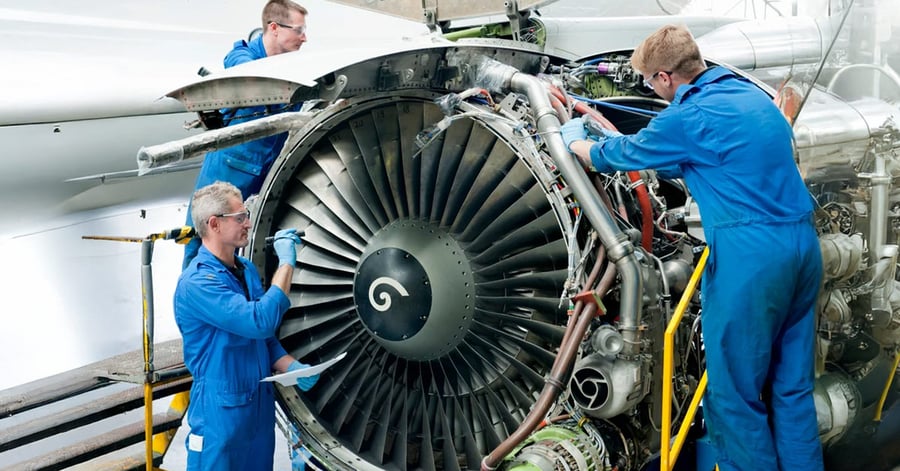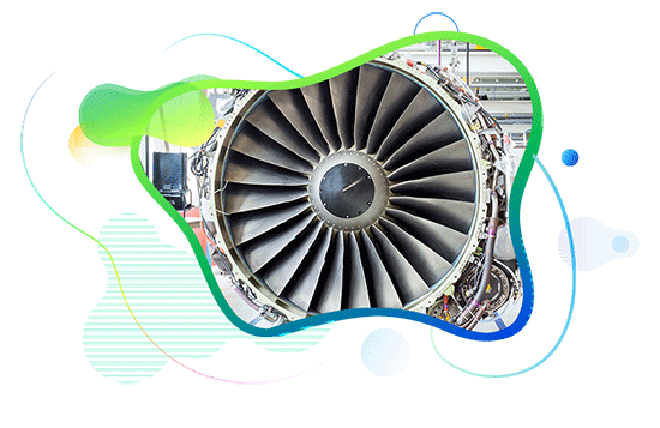
All You Need to Know About the Pre-Induction Stage of Aircraft Engine MRO
All You Need to Know About the Pre-Induction Stage of Aircraft Engine MRO
5:14
Published :

Managing and maintaining complex aircraft engines is no small feat. These engines are not only among the most sophisticated and expensive assets on an aircraft, but their maintenance carries its own significant cost and complexity. Within the scope of aircraft engine MRO, the pre-induction stage is a critical first step that sets the tone for everything that follows. The pressure is on for MRO service providers, who must balance the high costs of technical expertise and precision tooling against razor-thin operating margins. Cost-effectiveness and efficiency are not just desirable; they are survival skills in this industry.
Despite the centrality of technology to aviation, many MRO providers still rely on manual tools—think paper trails and Excel spreadsheets—to manage engine maintenance visits. A standard engine MRO process typically unfolds over several key stages:
In this blog, let us focus on the first and foremost step: the pre-induction stage of aircraft engine MRO. This stage is critical for setting up a smooth, controlled, and compliant visit. Yet, it’s fraught with challenges that, if not properly managed, can cause cascading issues down the line.
The pre-induction stage of aircraft engine MRO is all about preparation and foresight. However, several recurring pain points make the lives of MRO planners and engineers more difficult:
Innovation is reshaping how savvy MROs handle pre-induction stage of aircraft engine MRO. Here's an example of how Ramco’s purpose-built engine MRO module can streamline this phase:

The dedicated visit management hub in Ramco’s aviation suite designed for engine configuration and lifecycle management. In this hub:
This centralization of data, automation of calculations, and real-time visibility transforms the pre-induction stage of aircraft engine MROchaos into a streamlined, manageable process. Planners gain back valuable time, errors are significantly reduced, and the overall maintenance visit flows more predictably and efficiently.
The pre-induction stage of aircraft engine MRO is foundational for successful, cost-effective aircraft engine maintenance. By embracing digital solutions thoughtfully designed for the unique challenges of engine MRO, service providers can move beyond the limitations of "paper and spreadsheets” and tackle the complexity head-on.
The benefits are clear: better configuration control, enhanced compliance, reduced errors, and a smoother experience for both MRO staff and their customers. For an industry under relentless pressure to do more with less, these improvements are not just welcome—they are essential.
Stay tuned for our next post, where we’ll explore how digitalization continues to drive value in the subsequent phases of the engine MRO process.
Enterprise asset management (EAM) involves the management of mission critical assets of an organization throughout each asset's lifecycle. EAM is used to plan, optimize, execute, and track the needed maintenance activities with the associated priorities, skills, materials, tools, and information. The aim is to optimize the quality and utilization of assets throughout their lifecycle, increase productive uptime and reduce operational costs.
Enterprise asset management (EAM) involves the management of the maintenance of physical assets of an organization throughout each asset's lifecycle. EAM is used to plan, optimize, execute, and track the needed maintenance activities with the associated priorities, skills, materials, tools, and information.
The software helps in effective maintenance of assets through preventive, predictive, shutdown and breakdown maintenance strategies. The system also helps enterprises mitigate equipment risks by enhanced safety standards. The streamlined operations and improved asset performance helps organizations increase their investment effectiveness.
EAM is important because it helps organizations track, assess, manage and optimize asset quality and reliability. Asset intensive Organizations have hundreds, thousands, even millions of assets which needs to be maintained to maximize / optimize life of these assets to increase the return on investment.
The key features of effective EAM are:
Asset Intensive companies under the following Industries :
Contact us for a meeting and schedule a demo
This differs on case to case basis, based on the type of installation and unique industry specific requirements. Contact us for a meeting and schedule a demo.
This differs on case to case basis, based on the type of installation and unique industry specific requirements. Contact us for a meeting and schedule a demo.
Stay Connected, follow us on LinkedIn / Twitter to know more about EAM Software latest trends.

Prakash Babu Devara is Head of Aviation Marketing at Ramco Systems, bringing over 15 years of experience in marketing and branding. With a passion for aviation and technology, he is dedicated to bringing the best of both worlds together to drive value proliferation. Prakash has a proven track record in developing and implementing effective marketing strategies, building strong brands, and driving business growth. In addition to his role at Ramco, he is an aviation blogger and a seasoned public speaker known for communicating complex ideas clearly and engagingly.

All Rights Reserved. © Copyright 2024. Ramco Systems.